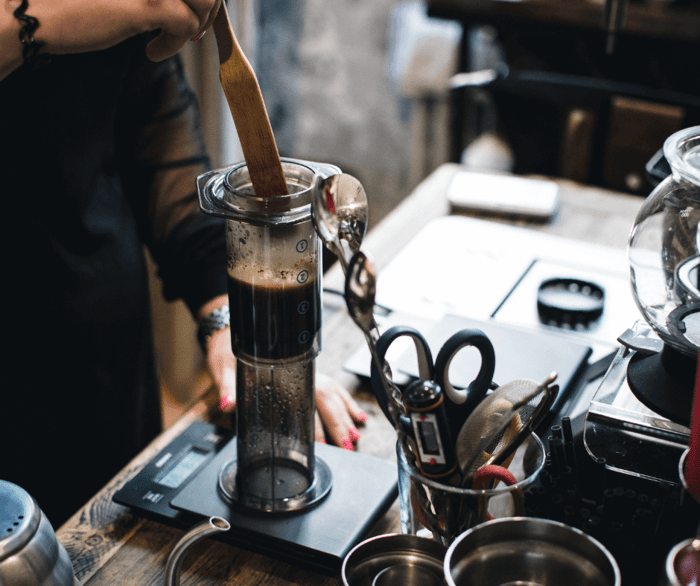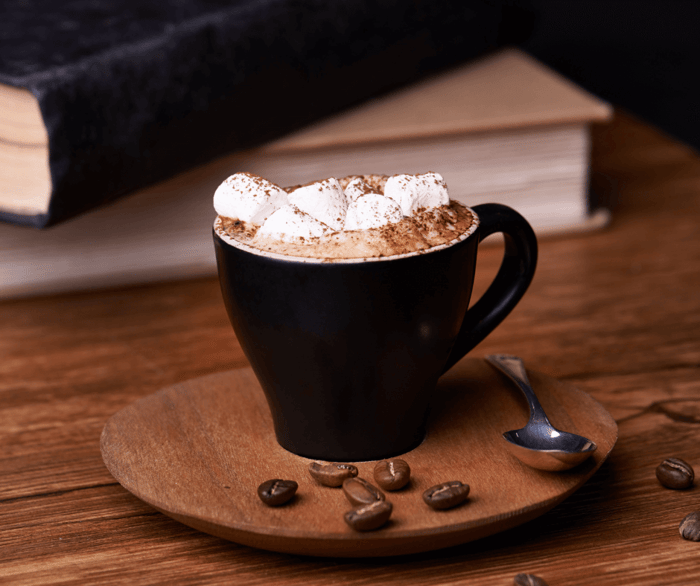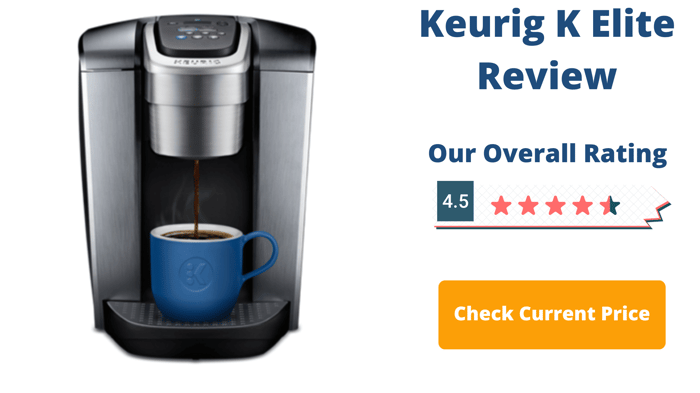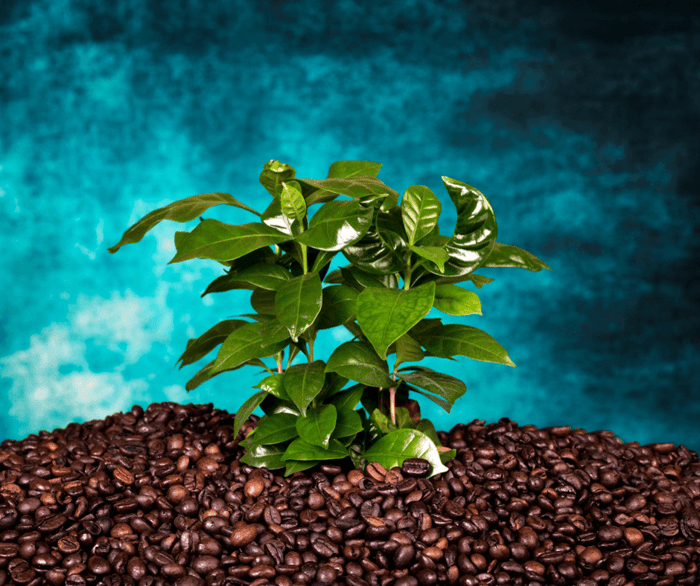
When it comes to making coffee using the pour over method, there’s no shortage of things that you can do to take your coffee game up a notch.
I know, I know—I'm sure your pour over coffee is already pretty great, but if you want to make truly excellent pour over coffee, here are 11 advanced tips that professional baristas use to make their coffee even better.
(Why 11 tips, and not 10? Because we like to go above and beyond.)
Tip #1 – Use a gooseneck kettle for more precise pouring
Gooseneck kettles are very trendy right now, but there's a good reason. If you want to be able to pour water more precisely onto your coffee grounds, using a gooseneck kettle is very helpful. Gooseneck kettles have long and slender necks that allow you to pour water slowly and steadily, without having to worry about dribbling or spilling. This is important because it allows you to wet all of the coffee grounds evenly, ensuring that each and every one of them gets properly saturated.
Need a good Gooseneck kettle option? We found a few great options for you on Amazon:
Tip #2 – Pre-wet your coffee filter
This might seem like a small detail, but pre-wetting your coffee filter can actually make a big difference in the quality of your coffee. When you pre-wet the filter, not only does it rinse away any paper taste that might be lingering, but with the filter already saturated, your coffee will brew faster. (It also helps gently heat up fragile ceramic and glass brewers a little before brewing.) To pre-wet your filter, simply pour hot water over it and then dump out the water before adding your coffee grounds.
Tip #3 – Keep your coffee grounds level in the filter—don't let them get pushed over against the sides of the filter
Doing this results in more even extraction, and ultimately, a better, tastier cup of pour over coffee. If you pour in the water with too much force, without using a circular/spiraling motion, and let the grounds get pushed to the edges of the cone filter, you'll end up with weaker-tasting pour over coffee.
Tip #4 – Use fresh, filtered (or spring) water
This one should be a no-brainer considering coffee is around 98.75% water, but many people overlook it. Using fresh, high-quality water is essential for making great pour over. Does your coffee taste flat and lifeless, or "off?" Try using fresh filtered water or spring water to eliminate any impurities or extra minerals that might affect the flavor of your coffee.
Tip #5 – Use the right ratio of coffee to water
The perfect ratio of coffee to water varies depending on personal preference, but a good starting point is 2 tablespoons of coffee per 6 ounces of water. From there, you can adjust the ratio to make your coffee as strong or weak as you like. (I tend to go stronger with my pour over, personally—but everyone's tastes are different!)
Tip #6 – Use a digital scale to measure your coffee beans and water
If you want to be as precise as possible when making coffee, using a digital scale is a must (Find a variety on Amazon). This will help you to measure out the perfect amount of coffee beans, which then enables you to measure water to the exact amount that you need for that amount of grounds. (It also makes the measurements in coffee recipes a lot more meaningful when you're not trying to guess what "29 grams" looks like.)
Tip #7 – Grind your coffee beans fresh—and grind them last.
For the best flavor, it's important to grind your coffee beans fresh before brewing. This means that you'll need to invest in a good quality coffee grinder. If you don't have one, most coffee shops will be happy to grind your beans for you. But for the maximum flavor possible, don't grind your beans at the beginning—grind them as the last step before you pour hot water over them. That way, your grounds are only exposed to the air for 15-30 seconds rather than sitting there for several minutes.
Tip #8 – Let boiling water cool slightly before pouring
Many people pour boiling hot water directly onto their coffee grounds as soon as the kettle boils. Doing this can scald the grounds and make your coffee taste bitter. To avoid this, let the water come to a boil and then remove it from the heat for 30 seconds to 1 minute before pouring. This will ensure that the water is hot enough to extract all of the flavor from the coffee beans, but not so hot that it scalds them.
Tip #9 – Try to keep the water line at the same level as you pour
Doing this means that all the coffee is in contact with water, resulting in a more consistent flavor. Pouring in slow "spurts" or "pulses" can help to achieve this without moving the coffee grounds too much—though you should also be pouring in a slight spiral motion to help offset that. Slowly add water to the cone filter, and allow it to seep through before adding more.
Tip #10 – Don't be shy about the bloom
When you're allowing the coffee to bloom, you don't need to be "skittish" with the water. Many times I see people pour drips and drabs on the coffee grounds, backing away quickly each time they see the coffee start to rise. Go ahead and let that bloom rise high with lots of water—use a 1:1 ratio of water to coffee weight as a good starting point, and adjust from there if you like.
Wondering what the heck is a coffee bloom? Read This Article
Tip #11 – Never underestimate the importance of the grind
The grind size is just one of many variables to worry about that impact the flavor of your coffee, but many people consider it as much as they should. After the "new coffee grinder smell" wears off, too many people eventually just keep grinding at whatever size their grinder was set to last. In general, a medium-fine grind is best for pour over coffee, but the perfect grind will vary depending on the specific coffee you're using—and your personal preferences, of course.
If your coffee is taking too long to brew, make the grind size more coarse. On the other hand, if your coffee is passing through the filter too quickly, make the grind size more fine. By experimenting with different grind sizes, you'll be able to dial in the perfect size and get better tasting pour over.
Want More Coffee Content?
- Daily Coffee Grind - Click Here
- Coffee Reviews - Click Here
- Coffee Brewing Guides - Click Here
- Coffee Brewer Reviews - Click Here
- All Things Tea - Click Here
As an Amazon Associate Meadow Ridge may earn from qualifying purchases.











